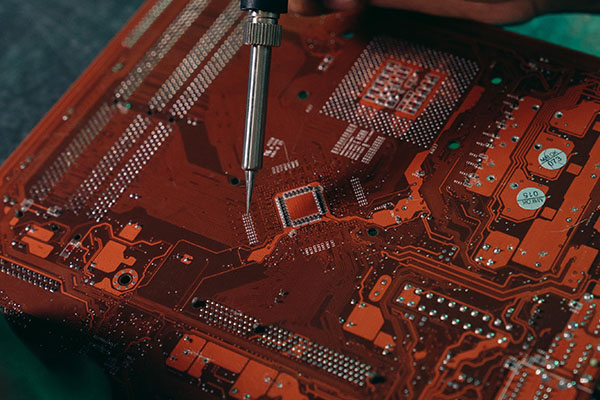
Solder balls are balls of metal alloy that form on the surface of a PCB after completing the soldering process. They constitute one of the biggest problems PCB Assembly manufacturers face.

Solder balls range in diameter from 0.2mm to 0.4mm and usually appear on the sides of chip components. Sometimes, solder balls are found around the pins of IC and connectors. For one thing, solder balls can affect the appearance of electronic products. And for another , the solder balls may fall off and resulting in short circuit of SMD, which greatly reduces the reliability of electronics. This is especially troublesome for assembling PCB with high density and thin pins. Therefore, in order to better control solder balls, we must do a good job in the process of prevention and improvement. The following by AiXun soldering kits for you will briefly talk about the causes of solder balls in SMT chip processing.
Solder balls on pcb are a type of surface mount technology used in the construction of printed circuit boards (PCBs). They are small spheres of solder that are placed on the surface of the PCB and heated to a specific temperature, causing them to melt and form a connection between the components on the board. Solder balls are used in place of traditional through-hole components, providing a more reliable connection and reducing the size of the board. They are an essential part of modern PCB design, allowing for more efficient and cost-effective production. Solder balls are available in a variety of sizes and materials, and can be used for a variety of applications.
Although the solder balls will eventually be exposed after reflow, every link in the overall assembly process contributes to their final shape. First, some solder paste may remain on the outside of the pad due to collapse or extrusion. Residual solder paste then often collects around the pads, especially on the sides of the chip assembly. Finally, the residual solder paste will melt in the reflow oven and turn into solder balls as the temperature decreases. If you squeeze out too much solder paste, you will create more solder balls.
1. Improper setting of reflow temperature curve. If the temperature in the preheating zone rises too fast, the moisture and solvent inside the solder paste will not be completely volatilized, and the moisture and solvent will boil when it reaches the reflow zone. The solder paste will splash out to form solder balls.
2. Improper design and structure of steel mesh opening. If solder balls always appear at the same location, it is necessary to check the stencil opening structure. The stencil causes missing prints and unclear printed outlines, and bridges each other. After reflow soldering, a large number of solder balls will inevitably be generated.
3. The time between the completion of chip processing and reflow soldering is too long. If the time from placement to reflow soldering is too long, the solder particles in the solder paste will oxidize and deteriorate, and the activity will decrease, which will cause the solder paste not to reflow and produce solder balls.
4. When mounting, the pressure of the mounting machine's rotating shaft makes the solder paste squeeze out of the pad at the moment the component is attached to the PCB, which will also cause the formation of solder balls after soldering.
5. Insufficient cleaning of PCB boards with solder paste printing errors makes solder paste remain on the surface of the PCB board and in the through holes, which is also the cause of solder balls.
6. During the component mounting process, the solder paste is placed between the pins and the pads of the chip components. If the pads and component pins are not well wetted, part of the liquid solder will flow out from the weld, forming Solder balls.
The above content is the cause of solder balls in SMT chip processing shared by AiXun. Hope it will be helpful to you! In the next article, we will continue to share the solutions to solder balls for you. To learn more about SMT chip processing, welcome to visit the AiXun website.
 WhatsApp
WhatsApp